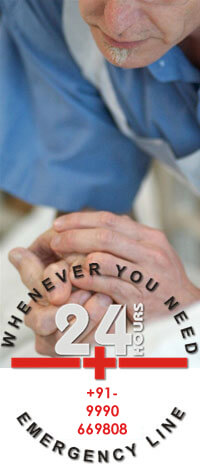First aid for fractures and dislocations
Online First Aid Class for Broken Bones
A fracture (broken bone) may not always be obvious as most breaks do not result in compound fractures bone protruding through the skin). It is important not to misdiagnose a break and mistake it for a bruise or sprain. Typical symptoms of a fracture are:
Immediate and excessive swelling
Injured area appears deformed
The farthest point of the injured limb turns blue or is numb to the touch
Even slight movement or contact to the injured area causes excessive pain
Dial 1-1-2 immediately and immobilize the broken bone with a splint. A functional splint can be made of almost any material (wood, plastic, etc.) as long as it is rigid and is longer than the broken bone. To apply the splint simply lay it along the broken bone and wrap it against the limb with gauze or a length of cloth, starting at a point farthest from the body. Do not wrap it too tight as this may cut off blood flow.
If the break is in the forearm, loosely wrap a magazine or a thick newspaper around the break and use a sling fashioned from gauze or a strip of cloth to keep the elbow immobilized.
A break in the lower part of the leg requires two splints, one on each side of the leg (or at least the shin). If suitable material is not available, you can use the victim's healthy leg as a makeshift splint.
As much as possible, keep the victim from moving and until an ambulance arrives, remember ICE:
- "I" is for ice - if possible apply an ice pack or ice cubes to the injured area. This will keep down the swelling and reduce pain
- "C" is for compression - if the wound is bleeding, apply direct pressure with a clean cloth to reduce blood flow.
- "E" is for elevation - try to keep the injured area as high above heart level as possible. This will reduce blood flow to the injury and minimize swelling.
First aid training for fractures and dislocations
For fractures:
- Stop any bleeding by applying direct pressure to the wound.
- Immobilize the injured limb using a splint, cloth, or a piece of cardboard.
- Apply cold compresses to reduce swelling and numb the pain.
- Seek medical attention immediately.
For dislocations:
- Keep the injured limb immobile and in a position that is comfortable for the person.
- Apply cold compresses to reduce swelling and numb the pain.
- Seek medical attention immediately.
Note: It's important to remember that fractures and dislocations are serious injuries that require professional medical treatment. The above steps are intended to provide temporary relief until professional medical help is available.
Learn more about First Aid For Broken Bones and Dislocations, and other Medical Emergencies, through online Classes run by a 24x7 Medical Service at Delhi First Aid and CPR Training institute New Delhi. Sign up for a class online at Delhi First Aid and CPR Training Institute.


































